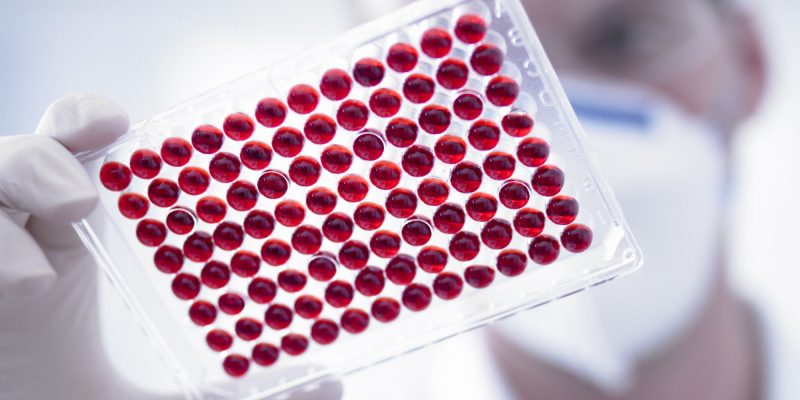The human body is a complex system in which various processes continuously occur. In some cases, the production of certain substances should be controlled by a person in order to avoid possible health problems. So, to track the amount of sugar in blood plasma, an analysis called a glucose tolerance test will help
Material Content:
What is glucose tolerance test done for?
Glucose is a kind of "fuel" necessary for the full functioning of the body. This substance helps maintain the tone of all systems and is involved in metabolic processes. Absolutely all cells in the human body need glucose. For a number of reasons, the latter in the body can be increased or, conversely, lowered. As a rule, this directly depends on the characteristics of the human nutrition system, an overabundance of the use of sweet foods, or, on the contrary, a lack of nutrients from food. Excess sugar that the pancreas, which processes it into insulin, could not cope with, can be deposited in other organs, as well as muscles and tissues. This process increases the quantitative indicators of glucose, which can cause the development of diabetes. A low level of glucose in the blood can significantly reduce the efficiency of the cells responsible for the activity of the brain.
In order to identify alarming conditions in time and prevent their transition to a more severe stage, it is necessary to take a blood test for glucose in a timely manner or, in other words, do a glucose tolerance test.
By the way. Modern medicine has several types of glucose tests.The so-called sugar test or glucose tolerance test is just one of them. Such a study helps to identify disorders of carbohydrate metabolism and determine the amount of glucose in the blood plasma.
Is it necessary to systematically conduct such tests? Doctors recommend undergoing such an examination once every six months (after 40 years - once a year). The harsh statistics are inexorable - the number of people exposed to diabetes in Russia has reached 9 million. Every 10 seconds, the global number of diabetics is replenished by at least 2 people. At the same time, every 10 seconds one of them dies. This serious disease takes 4th place among pathologies that provoke a fatal outcome. In order not to replenish the ranks of the sick and prevent the deterioration of health, sugar tests should be carried out regularly.
Normal values and deviations
Indications of the amount of glucose in the blood directly depends on the age of the patient:
- children under 14 years old - 3.33–5.55 mmol / l;
- adults - 3.89–5.83 mmol / l;
- older than 60 years - 6.38 mmol / l.
The normal results of the glucose tolerance test during pregnancy are considered to be 3.3–5.8 mmol / L (if it is taken from the finger) and 4.0–6.3 mmol / L if venous blood was taken.
By the way, usually the glucose tolerance test is carried out under load, that is, the patient must first use water with glucose dissolved in it based on the weight of the subject. For such an analysis, the above indicators are typical. If the test is carried out without taking into account the last meal of the patient, the normal result should exceed 11.1 mmol / L.
Read also:blood from the nose - causes in an adult
Test preparation
Before preparing for taking a sugar sample, the patient should consider a number of recommendations:
- Observe the usual diet for 3 days prior to analysis.
- Do not drink alcohol or smoke 10-14 hours before testing.
- You can not supercool and engage in heavy physical work on the eve of the examination.
- Immediately before taking the sample, all medical procedures and medication should be excluded.
Important! Drug withdrawal is possible only with the approval of the attending physician!
Methodology
Having prepared for the analyzes, it's time to find out how the test is conducted. Usually a sugar test is given in the early morning. Most often, finger blood is used for research. Moreover, there is a kind of analysis: a test to determine glycated hemoglobin can be given at any time of the day without taking into account the patient's last meal.
Glucose tolerance test with a load is carried out in several stages:
- Primary blood sampling. Necessarily carried out on an empty stomach, while refraining from food you need at least 8 and no more than 14 hours, otherwise the reliability of the results may be distorted.
- Glucose load. 5 minutes after the initial blood donation, the patient consumes a glucose solution, or it is administered intravenously. 75 g of glucose (adults) and 75-100 g of pregnant women are dissolved in 250 ml of water. Calculation of glucose required for dissolution, if taken from a child, is carried out according to the formula 1.75 g per 1 kg of body weight of a small patient
- Approximately half an hour after loading re-sampling of the material. This step involves several approaches. Within an hour, the materials are taken for analysis several times. This will track glucose fluctuations. The research results are based on these grounds.
Important! All stages must be carried out in a clinic or in a private laboratory. Exercise glucose load yourself is not permissible!
Decoding glucose test results
The patient usually receives the test results after 1-2 days after testing (in private laboratories - after a few hours).
In a special test form, glucose is measured in moles per liter.Stably high rates sometimes indicate pancreatitis, diabetes mellitus, or at least prediabetes. An atypically low level of a substance sometimes becomes a symptom of diseases of the pancreas, stomach, and cirrhosis.
Nevertheless, one should not panic right away: glucose levels can fluctuate even in healthy people. Stress and other situations that contribute to the release of adrenaline can also affect the effectiveness of a sugar test. The doctor must make the final diagnosis, while taking into account not only the testimony, but also additional indicators and signs.
Contraindications for analysis
GTT is prohibited if the patient has:
- gastrointestinal diseases (in particular, with exacerbation of the latter);
- severe toxicosis in pregnant women;
- infectious or inflammatory diseases;
- glucose intolerance;
- malfunctioning liver or gallbladder;
Attention! A glucose tolerance test is not performed for persons under 14 years of age.
A glucose tolerance test is considered one way to monitor your body’s sugar level. It should be carried out, having previously prepared the body for testing. The load test should be carried out exclusively within the walls of a medical facility.


















